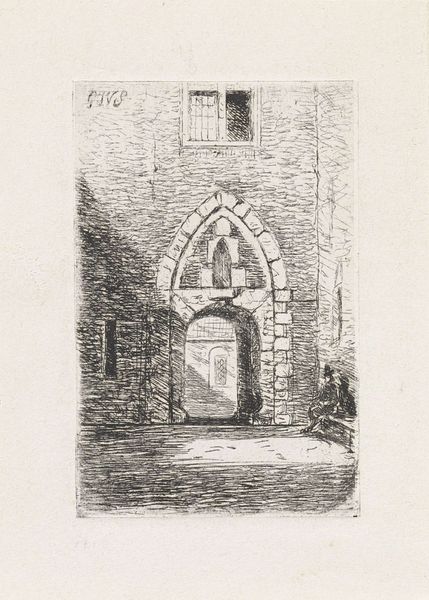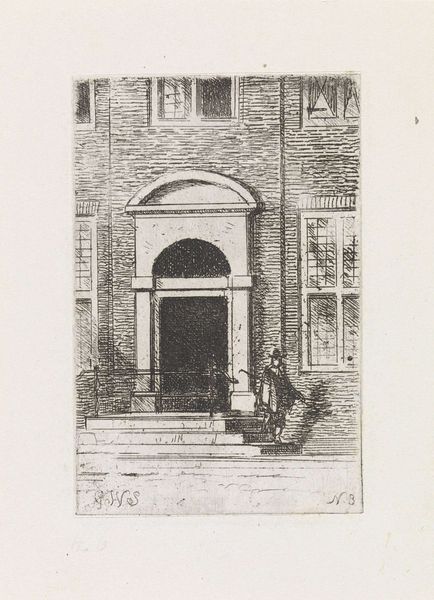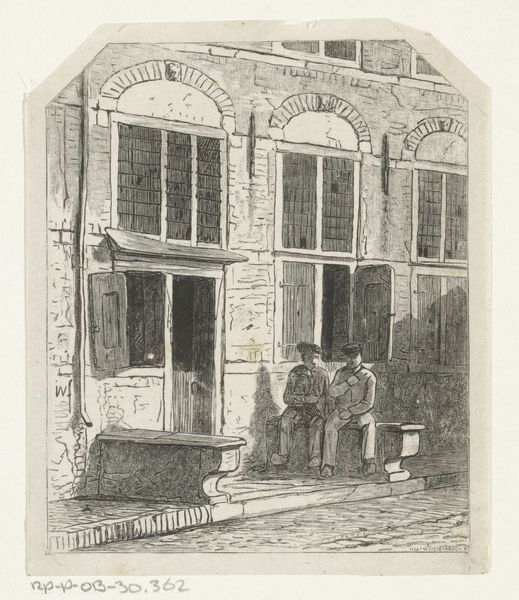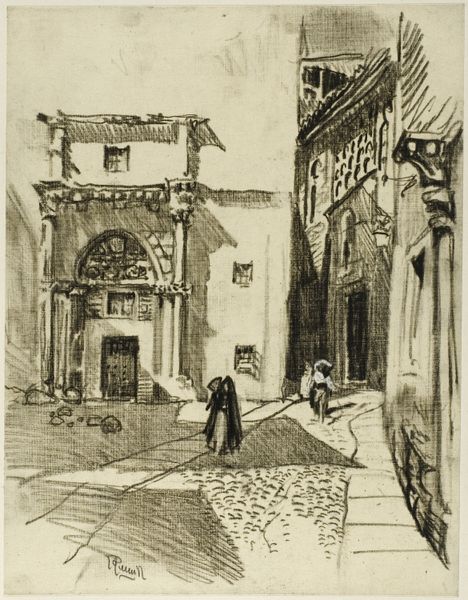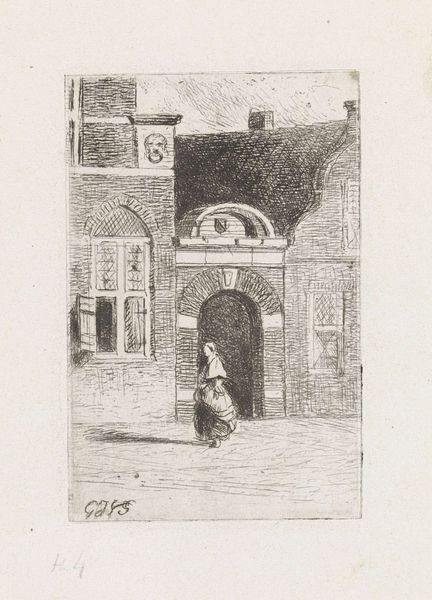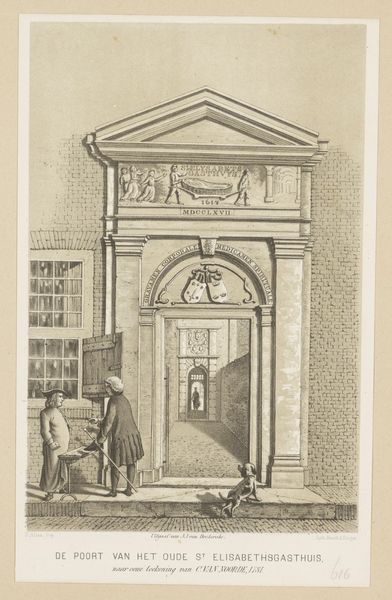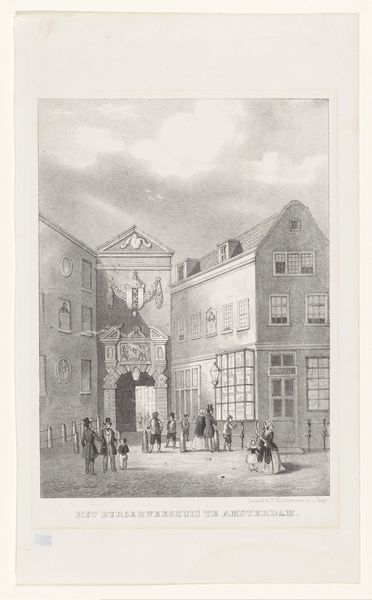
drawing, pen
#
pencil drawn
#
drawing
#
amateur sketch
#
light pencil work
#
thin stroke sketch
#
pencil sketch
#
incomplete sketchy
#
sketchwork
#
pen-ink sketch
#
pen
#
cityscape
#
pencil work
#
realism
#
initial sketch
Dimensions: height 77 mm, width 50 mm
Copyright: Rijks Museum: Open Domain
Gijsbertus Johannes Verspuy made this etching of the Lazaruspoort in Gouda in the mid-19th century. Etching is an indirect process, which is fascinating to consider. First, the artist coats a metal plate with a waxy, acid-resistant substance known as a ‘ground.’ Then, using a sharp needle, they draw into the ground, exposing the metal beneath. The plate is then immersed in acid, which bites into the exposed lines. The longer the plate stays in the acid, the deeper the lines become. The plate is then inked, and the surface wiped clean, leaving ink only in the etched lines. Finally, paper is pressed against the plate, transferring the image. It’s a labor-intensive process, demanding planning, patience, and skill. The resulting image has a distinctive character, a network of fine, precise lines that capture a wealth of detail. It speaks to the way that artists like Verspuy took a craftsmanlike approach, patiently recording the world around them, and in so doing, revealing its beauty.
Comments
No comments
Be the first to comment and join the conversation on the ultimate creative platform.

